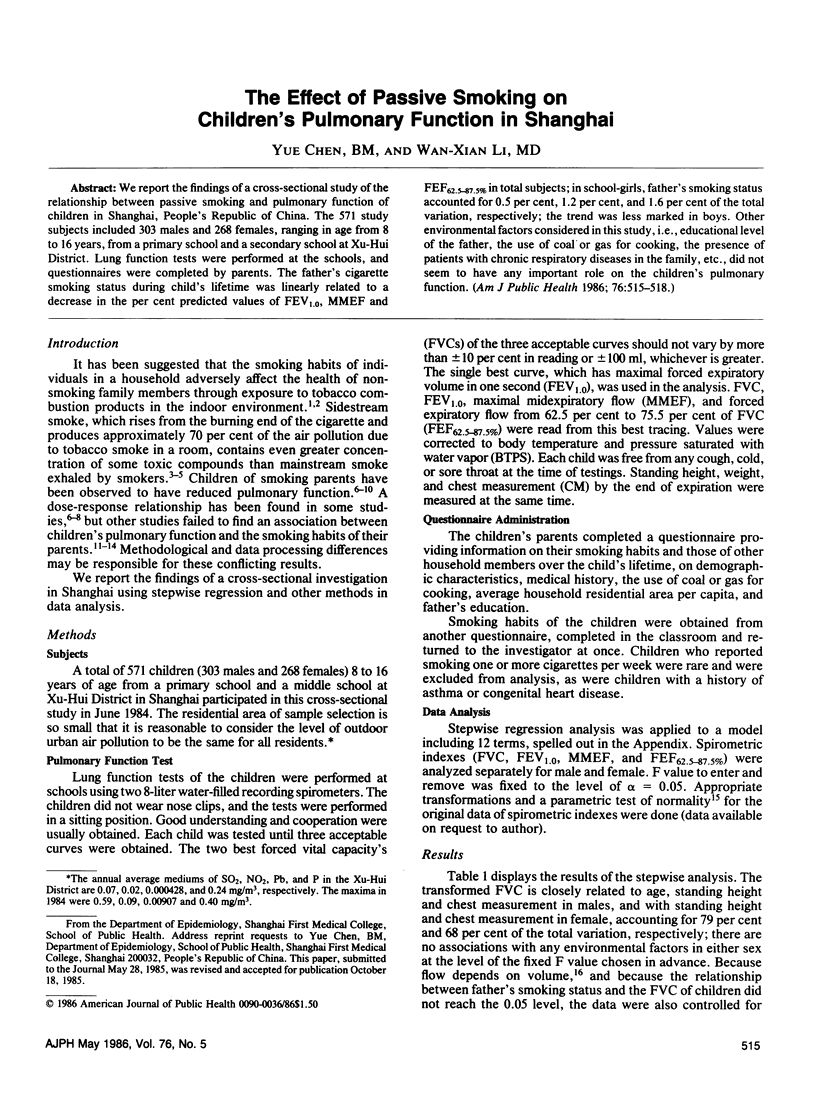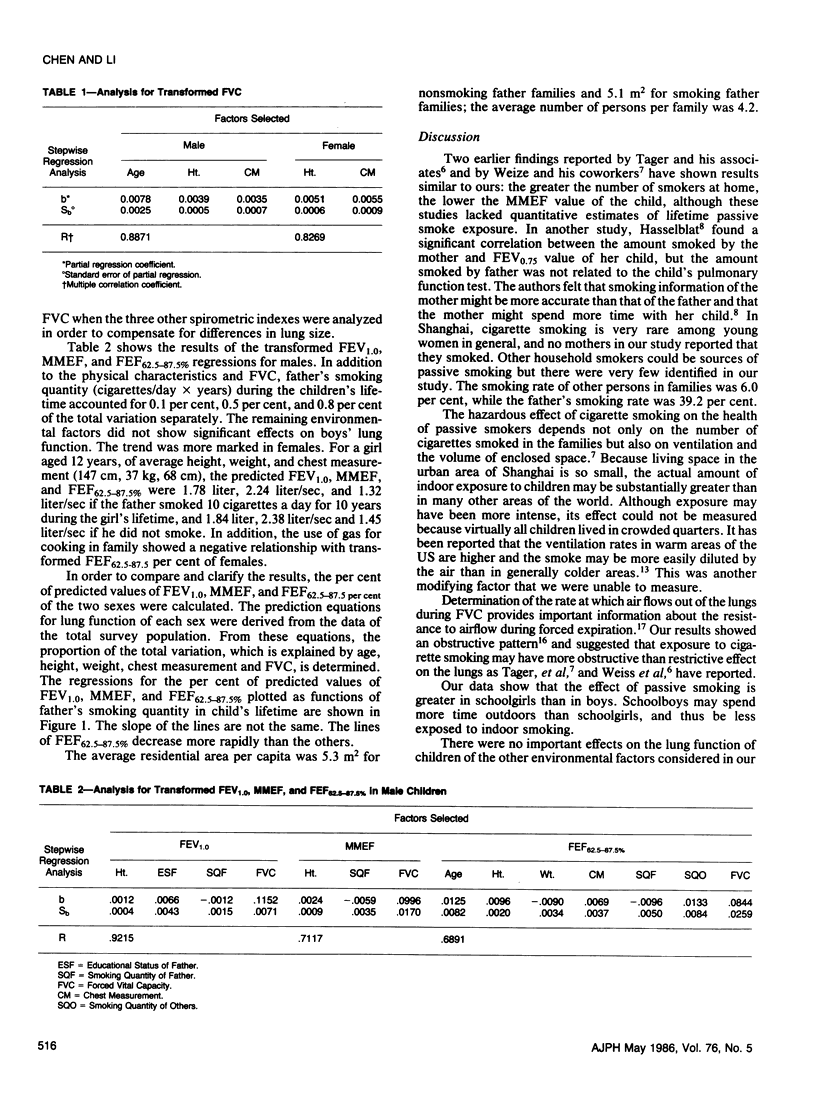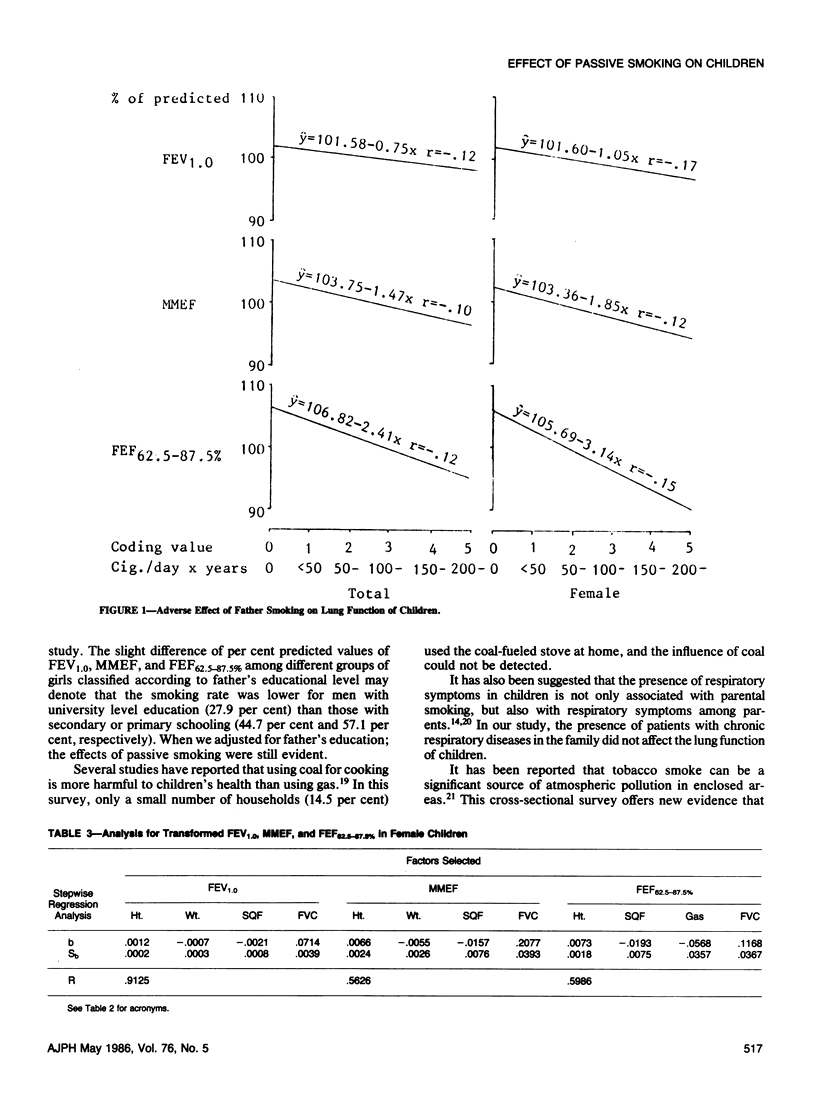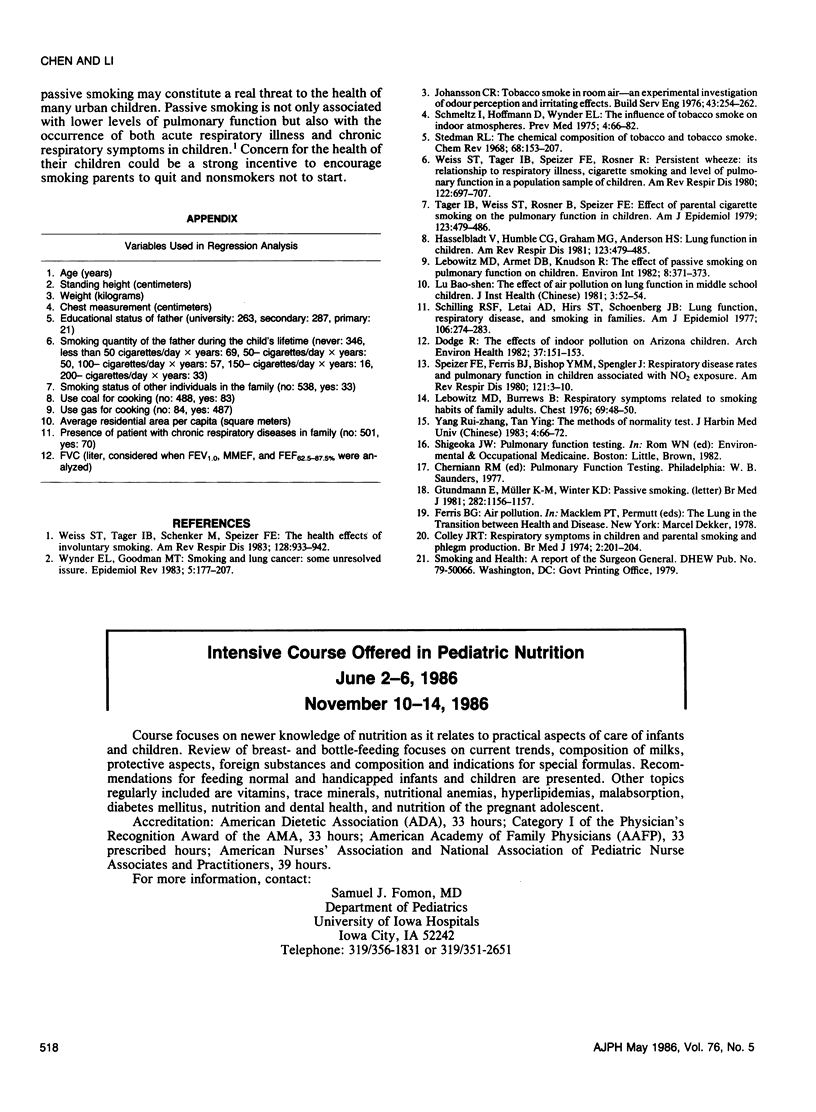Abstract
We report the findings of a cross-sectional study of the relationship between passive smoking and pulmonary function of children in Shanghai, People's Republic of China. The 571 study subjects included 303 males and 268 females, ranging in age from 8 to 16 years, from a primary school and a secondary school at Xu-Hui District. Lung function tests were performed at the schools, and questionnaires were completed by parents. The father's cigarette smoking status during child's lifetime was linearly related to a decrease in the per cent predicted values of FEV1.0, MMEF and FEF 62.5-87.5% in total subjects; in school-girls, father's smoking status accounted for 0.5 per cent, 1.2 per cent, and 1.6 per cent of the total variation, respectively; the trend was less marked in boys. Other environmental factors considered in this study, i.e., educational level of the father, the use of coal or gas for cooking, the presence of patients with chronic respiratory diseases in the family, etc., did not seem to have any important role on the children's pulmonary function.
Full text
PDF



Selected References
These references are in PubMed. This may not be the complete list of references from this article.
- Colley J. R. Respiratory symptoms in children and parental smoking and phlegm production. Br Med J. 1974 Apr 27;2(5912):201–204. doi: 10.1136/bmj.2.5912.201. [DOI] [PMC free article] [PubMed] [Google Scholar]
- Dodge R. The effects of indoor pollution on Arizona children. Arch Environ Health. 1982 May-Jun;37(3):151–155. doi: 10.1080/00039896.1982.10667555. [DOI] [PubMed] [Google Scholar]
- Hasselblad V., Humble C. G., Graham M. G., Anderson H. S. Indoor environmental determinants of lung function in children. Am Rev Respir Dis. 1981 May;123(5):479–485. doi: 10.1164/arrd.1981.123.5.479. [DOI] [PubMed] [Google Scholar]
- Lebowitz M. D., Burrows B. Respiratory symptoms related to smoking habits of family adults. Chest. 1976 Jan;69(1):48–50. doi: 10.1378/chest.69.1.48. [DOI] [PubMed] [Google Scholar]
- Schilling R. S., Letai A. D., Hui S. L., Beck G. J., Schoenberg J. B., Bouhuys A. Lung function, respiratory disease, and smoking in families. Am J Epidemiol. 1977 Oct;106(4):274–283. doi: 10.1093/oxfordjournals.aje.a112463. [DOI] [PubMed] [Google Scholar]
- Schmeltz I., Hoffmann D., Wynder E. L. The influence of tobacco smoke on indoor atmospheres. Prev Med. 1975 Mar;4(1):66–82. doi: 10.1016/0091-7435(75)90055-9. [DOI] [PubMed] [Google Scholar]
- Speizer F. E., Ferris B., Jr, Bishop Y. M., Spengler J. Respiratory disease rates and pulmonary function in children associated with NO2 exposure. Am Rev Respir Dis. 1980 Jan;121(1):3–10. doi: 10.1164/arrd.1980.121.1.3. [DOI] [PubMed] [Google Scholar]
- Stedman R. L. The chemical composition of tobacco and tobacco smoke. Chem Rev. 1968 Apr;68(2):153–207. doi: 10.1021/cr60252a002. [DOI] [PubMed] [Google Scholar]
- Weiss S. T., Tager I. B., Schenker M., Speizer F. E. The health effects of involuntary smoking. Am Rev Respir Dis. 1983 Nov;128(5):933–942. doi: 10.1164/arrd.1983.128.5.933. [DOI] [PubMed] [Google Scholar]
- Weiss S. T., Tager I. B., Speizer F. E., Rosner B. Persistent wheeze. Its relation to respiratory illness, cigarette smoking, and level of pulmonary function in a population sample of children. Am Rev Respir Dis. 1980 Nov;122(5):697–707. doi: 10.1164/arrd.1980.122.5.697. [DOI] [PubMed] [Google Scholar]
- Wynder E. L., Goodman M. T. Smoking and lung cancer: some unresolved issues. Epidemiol Rev. 1983;5:177–207. doi: 10.1093/oxfordjournals.epirev.a036258. [DOI] [PubMed] [Google Scholar]


